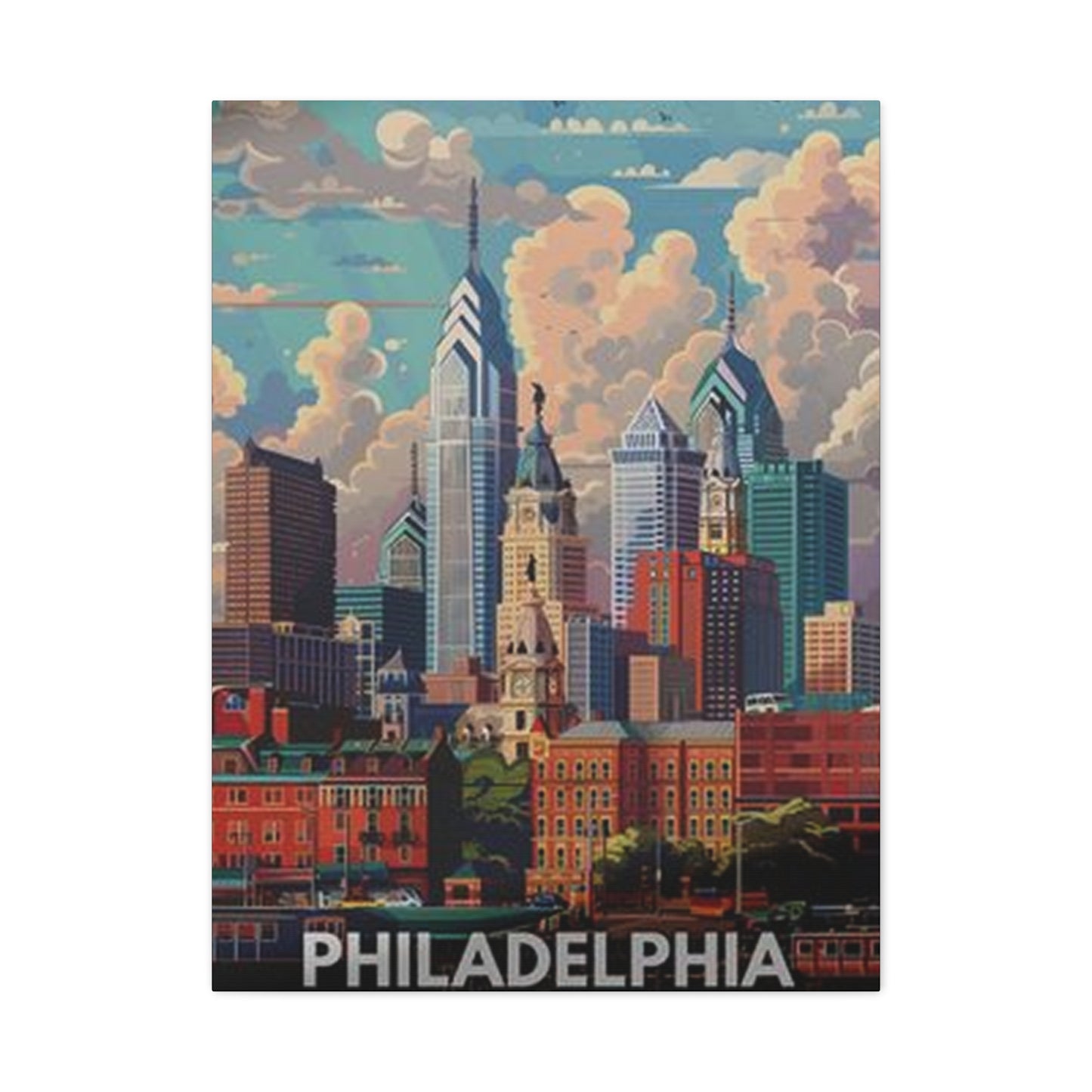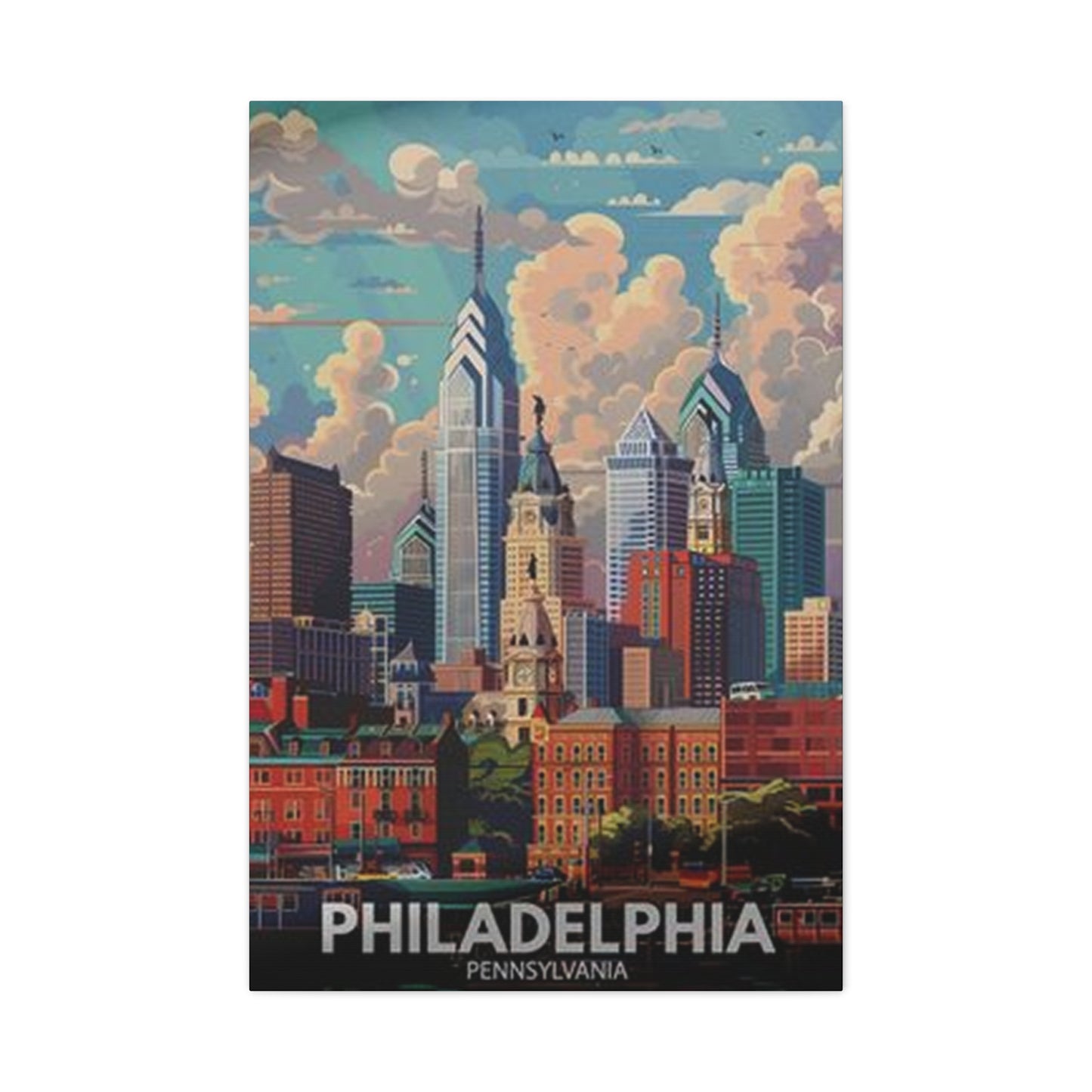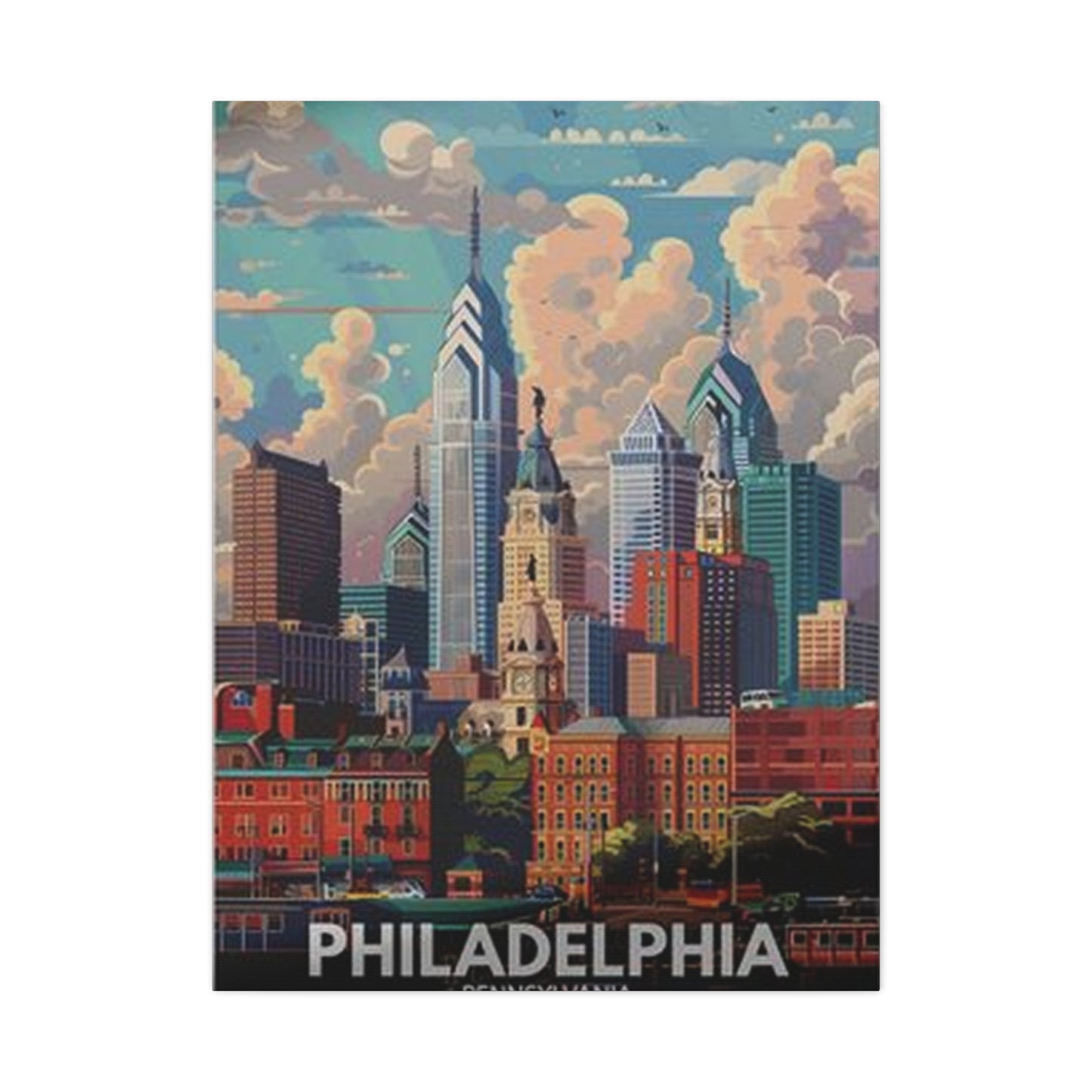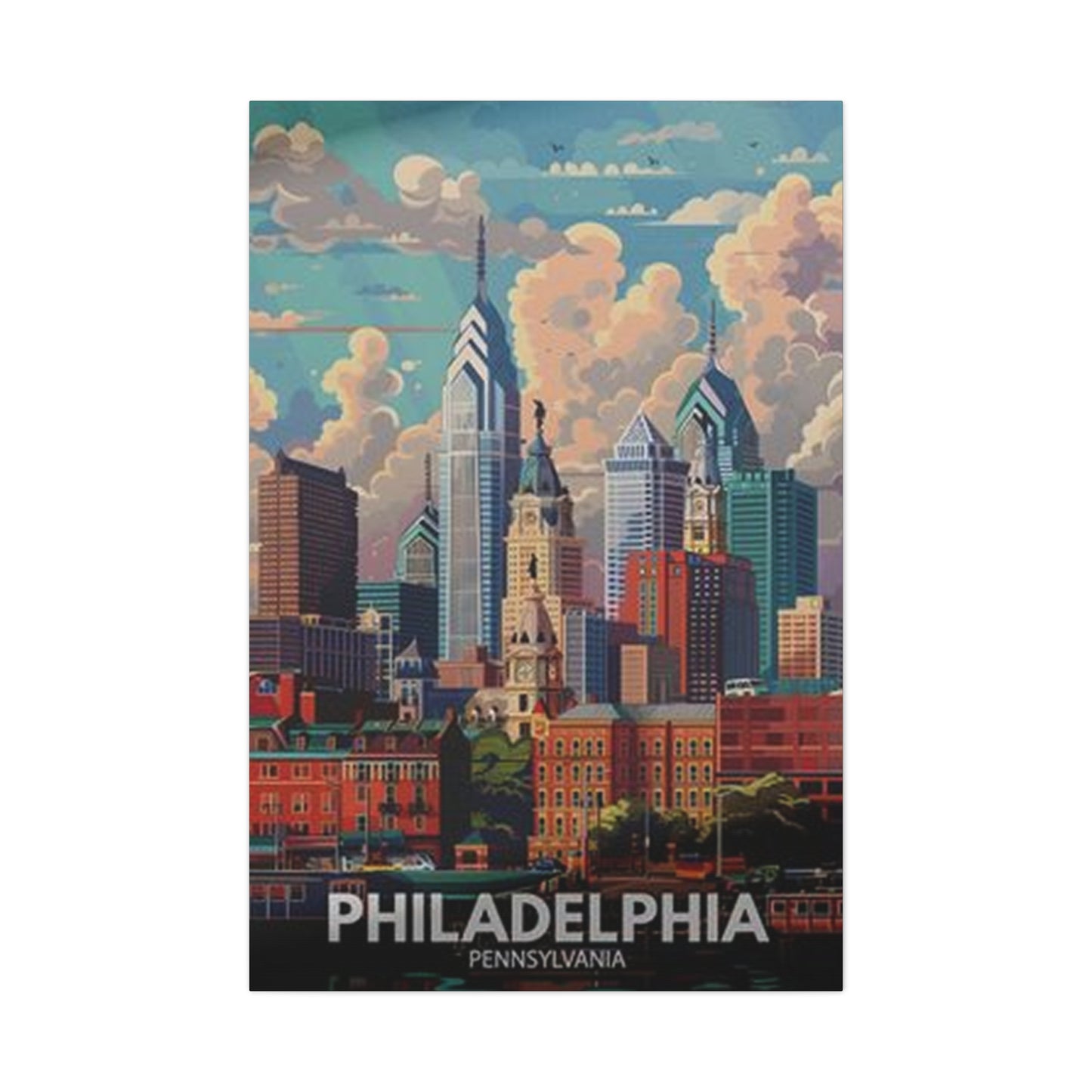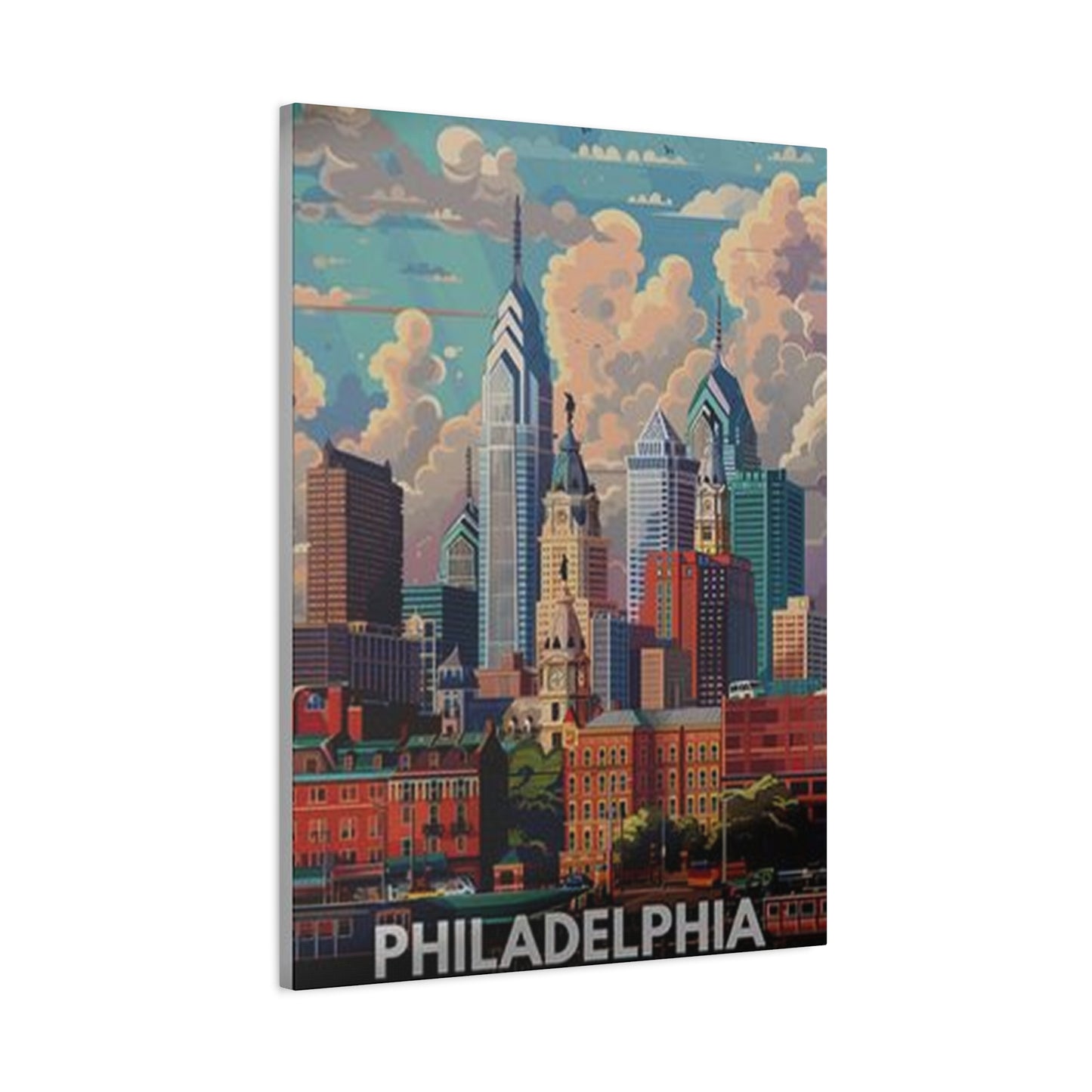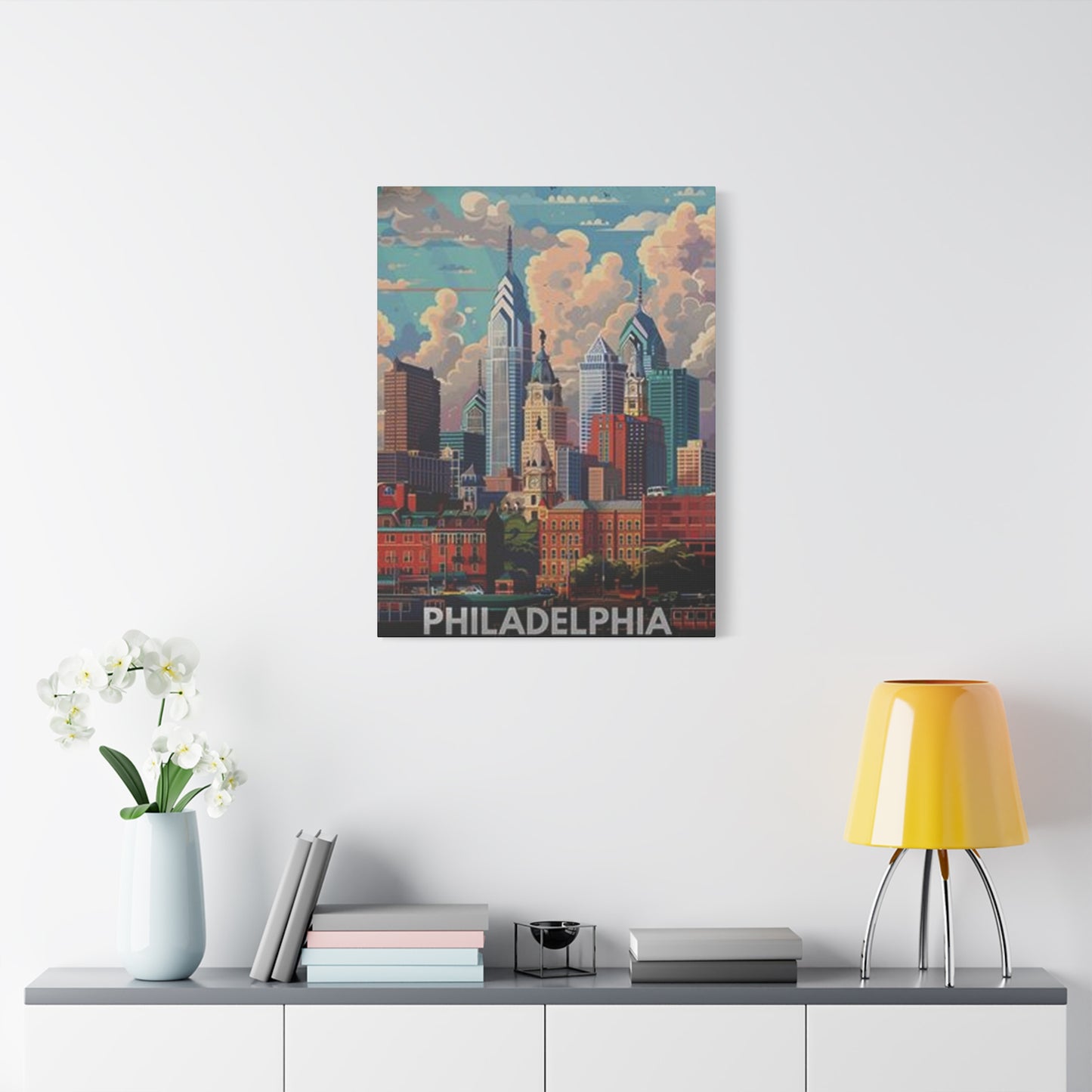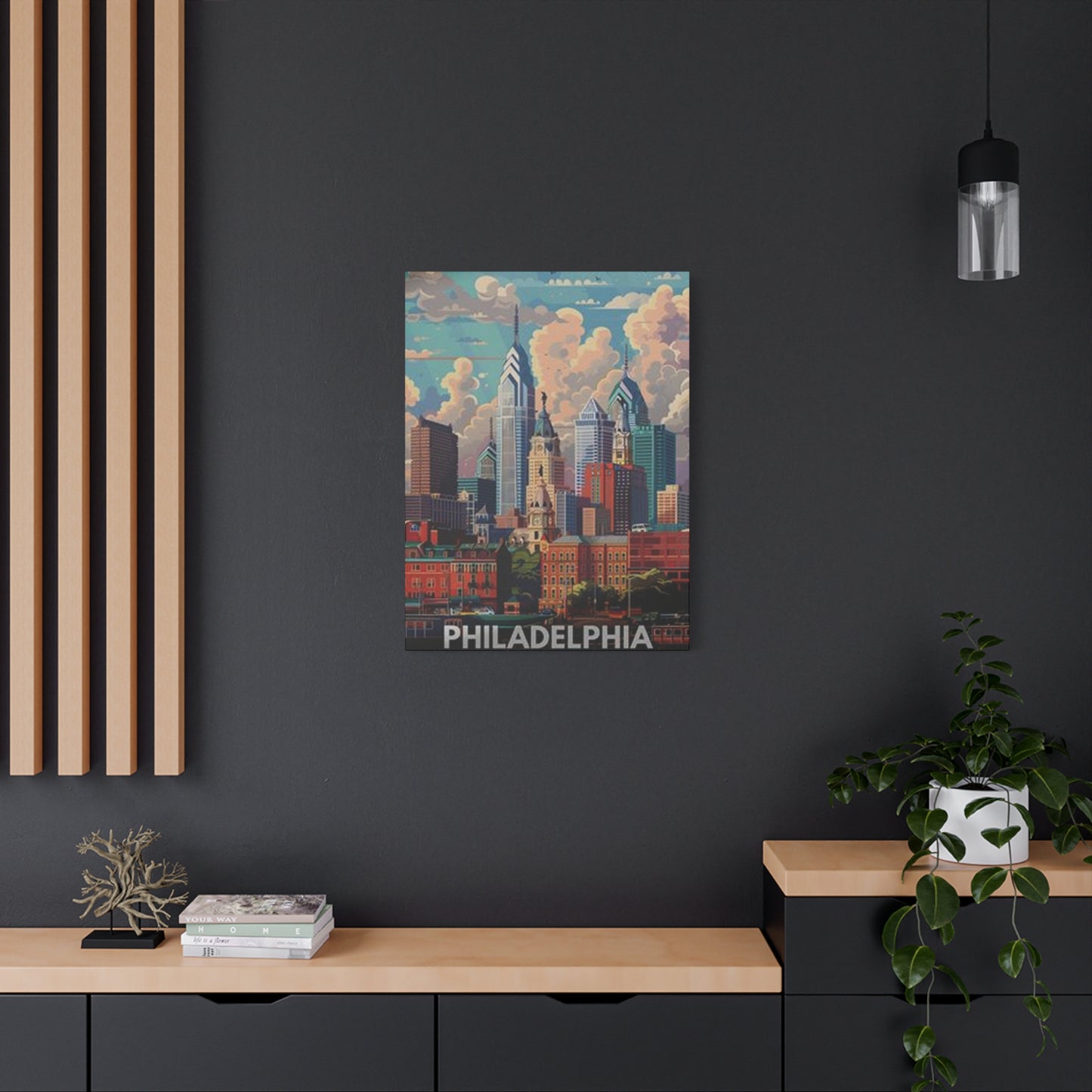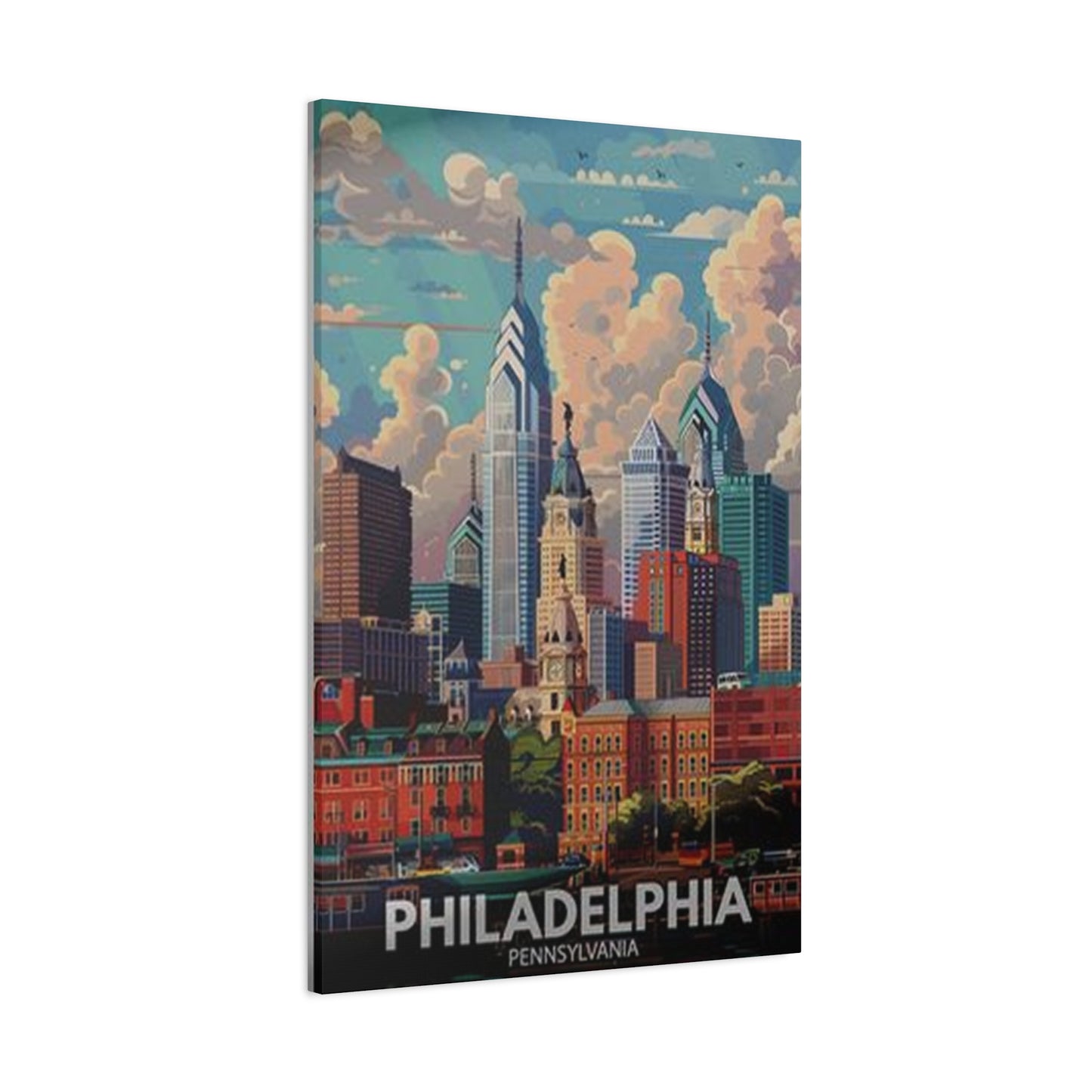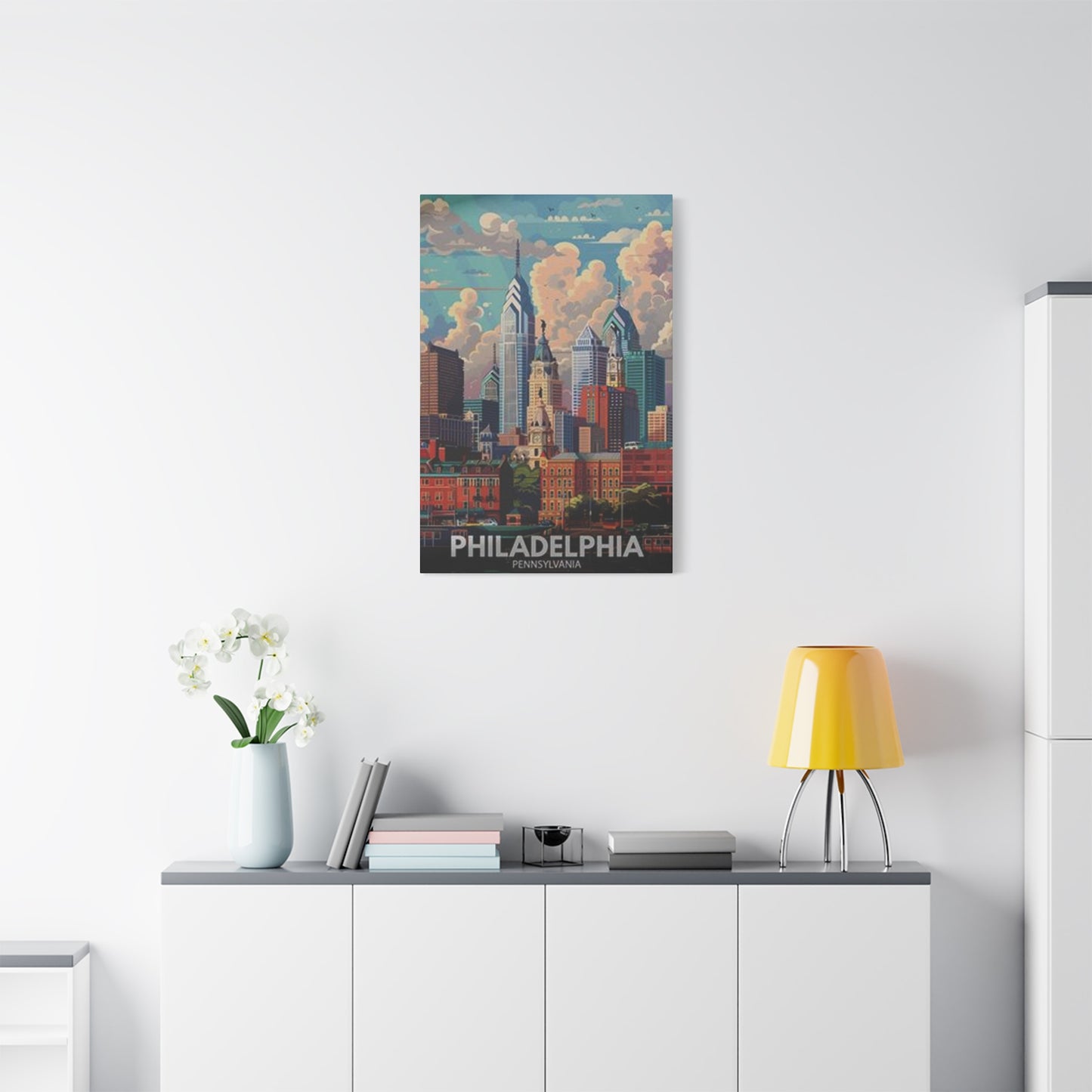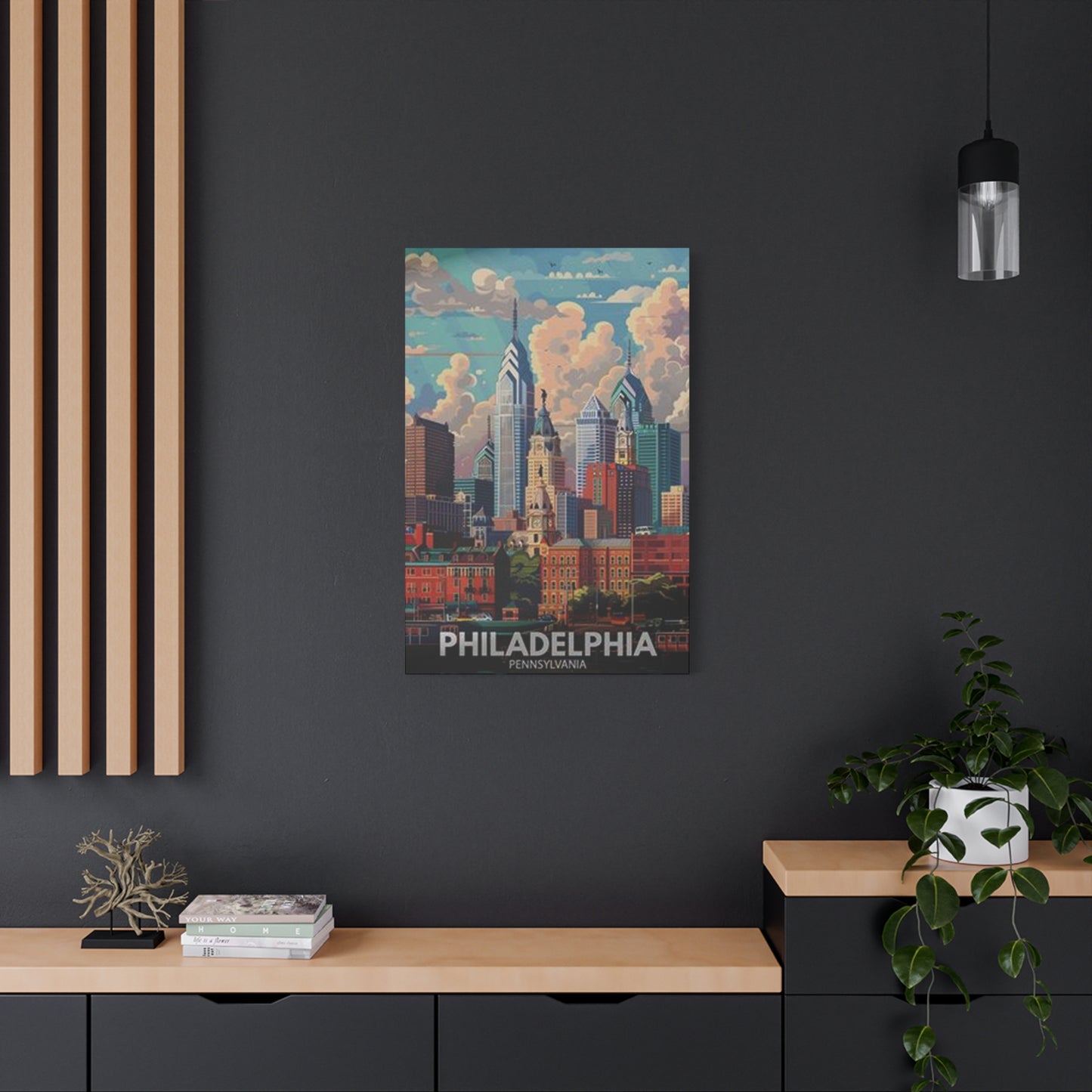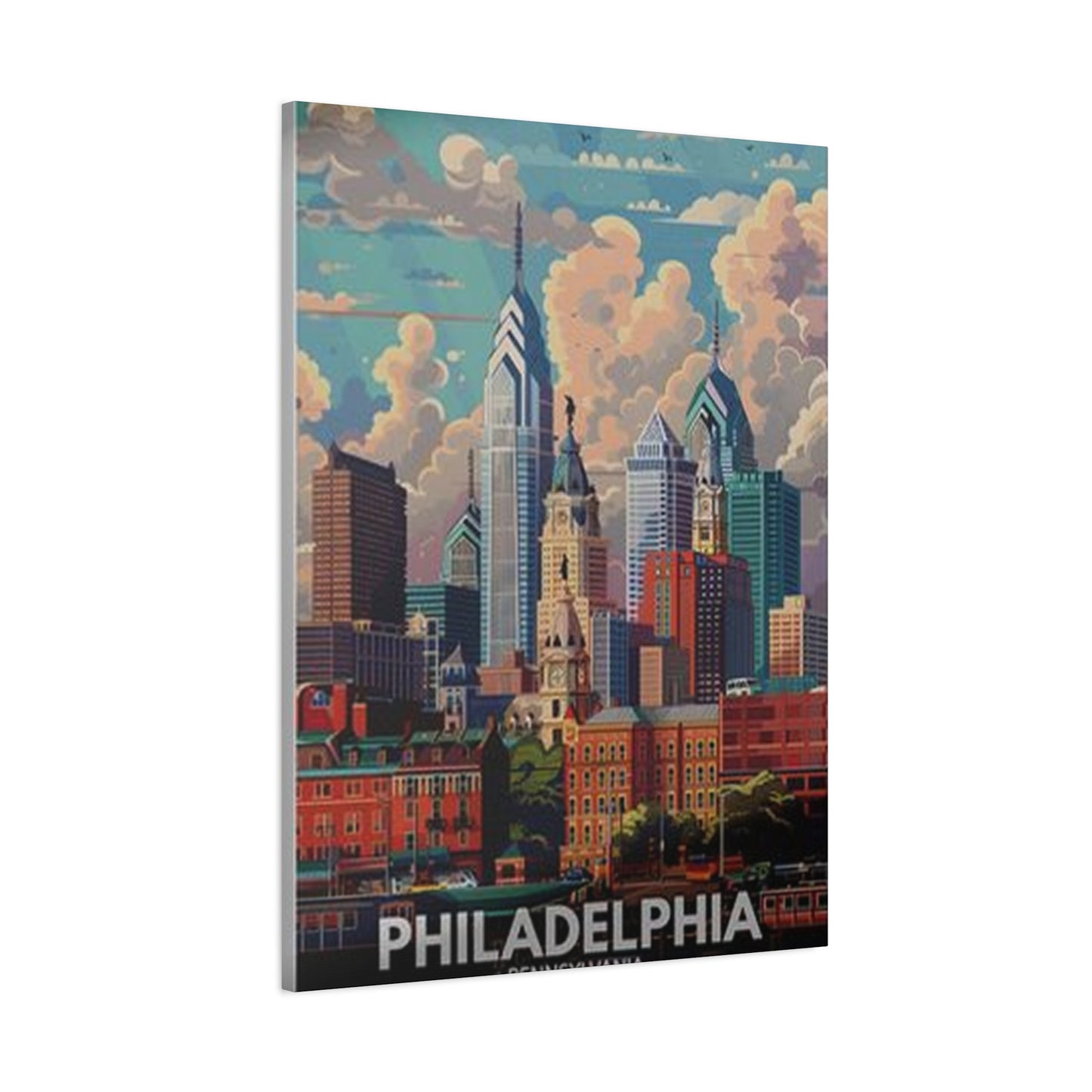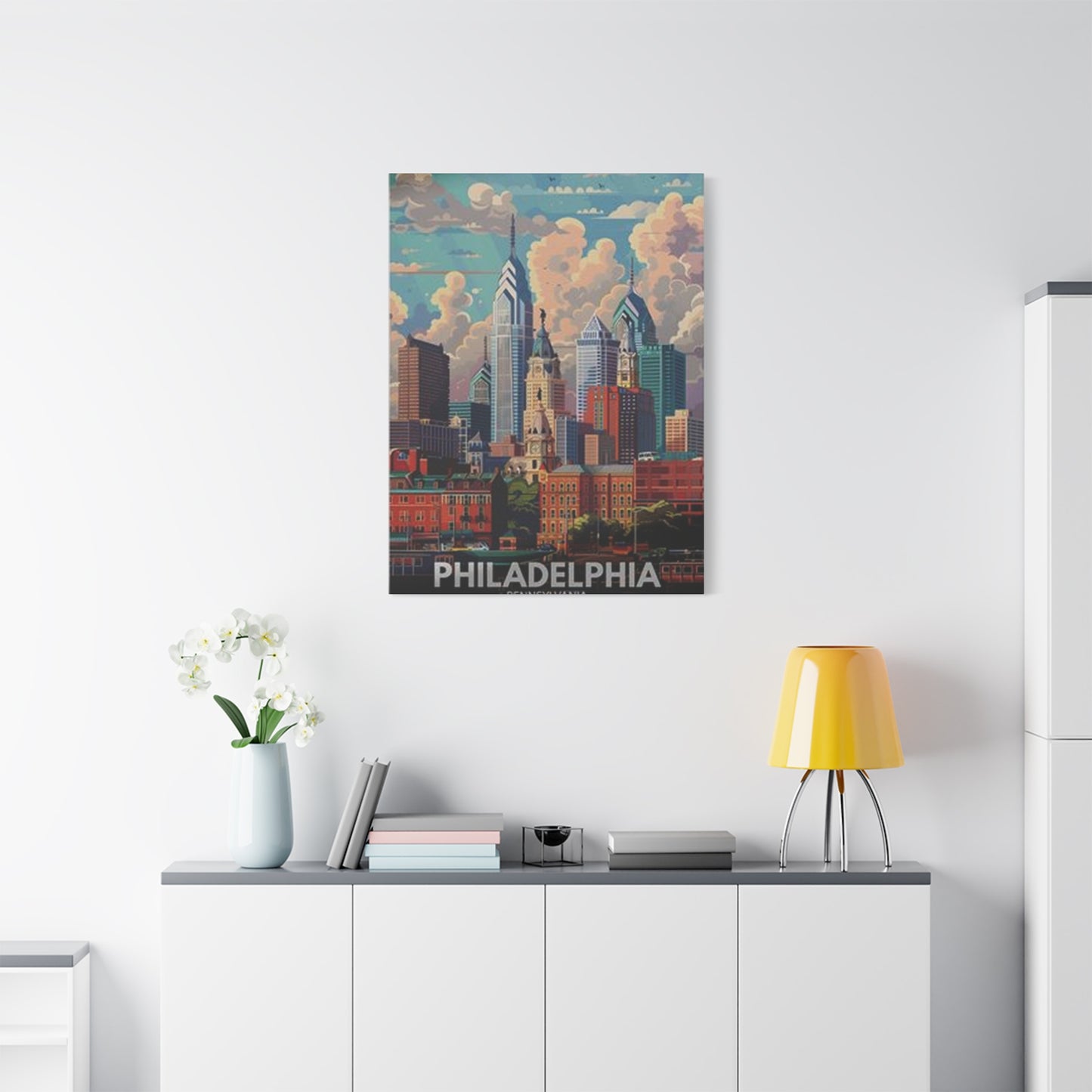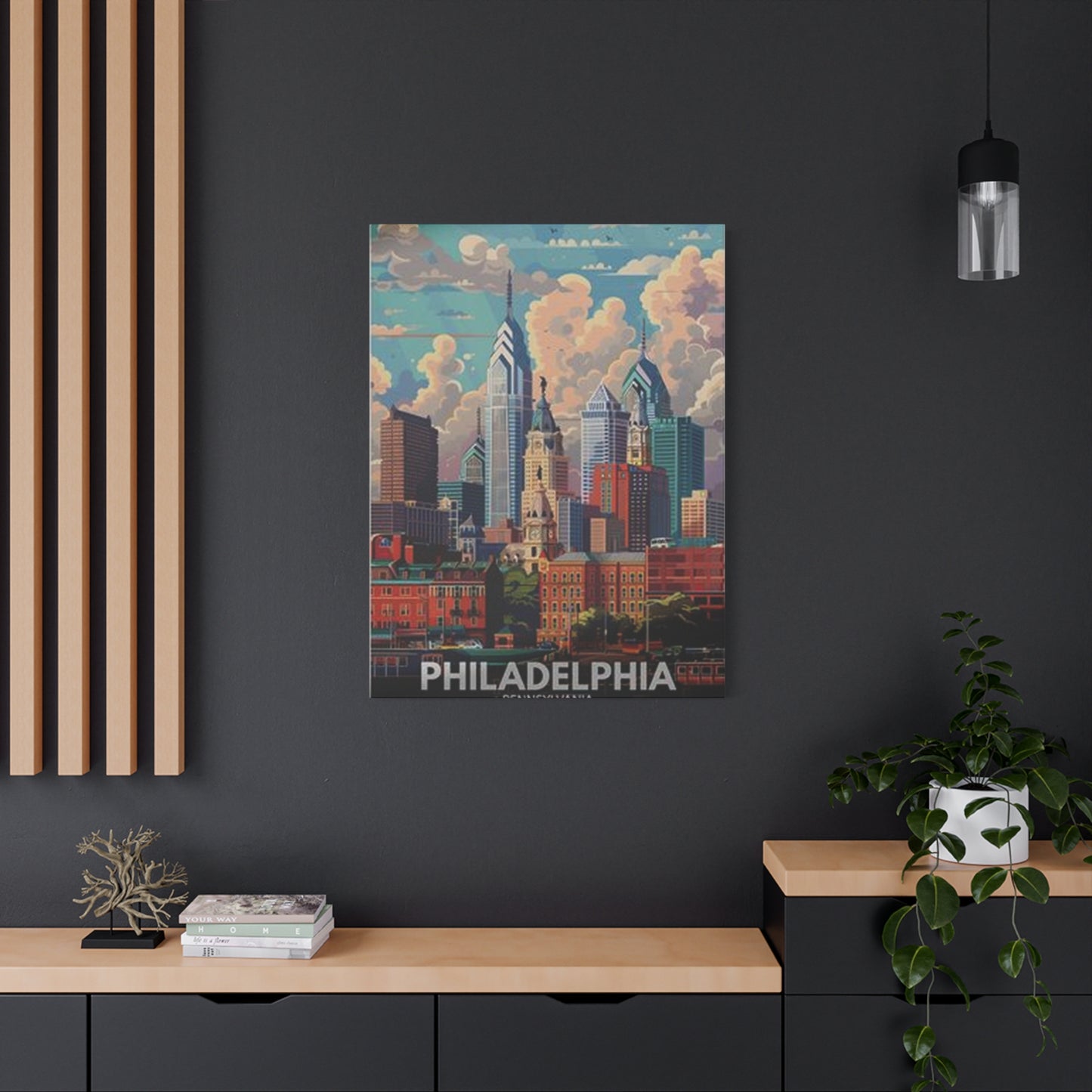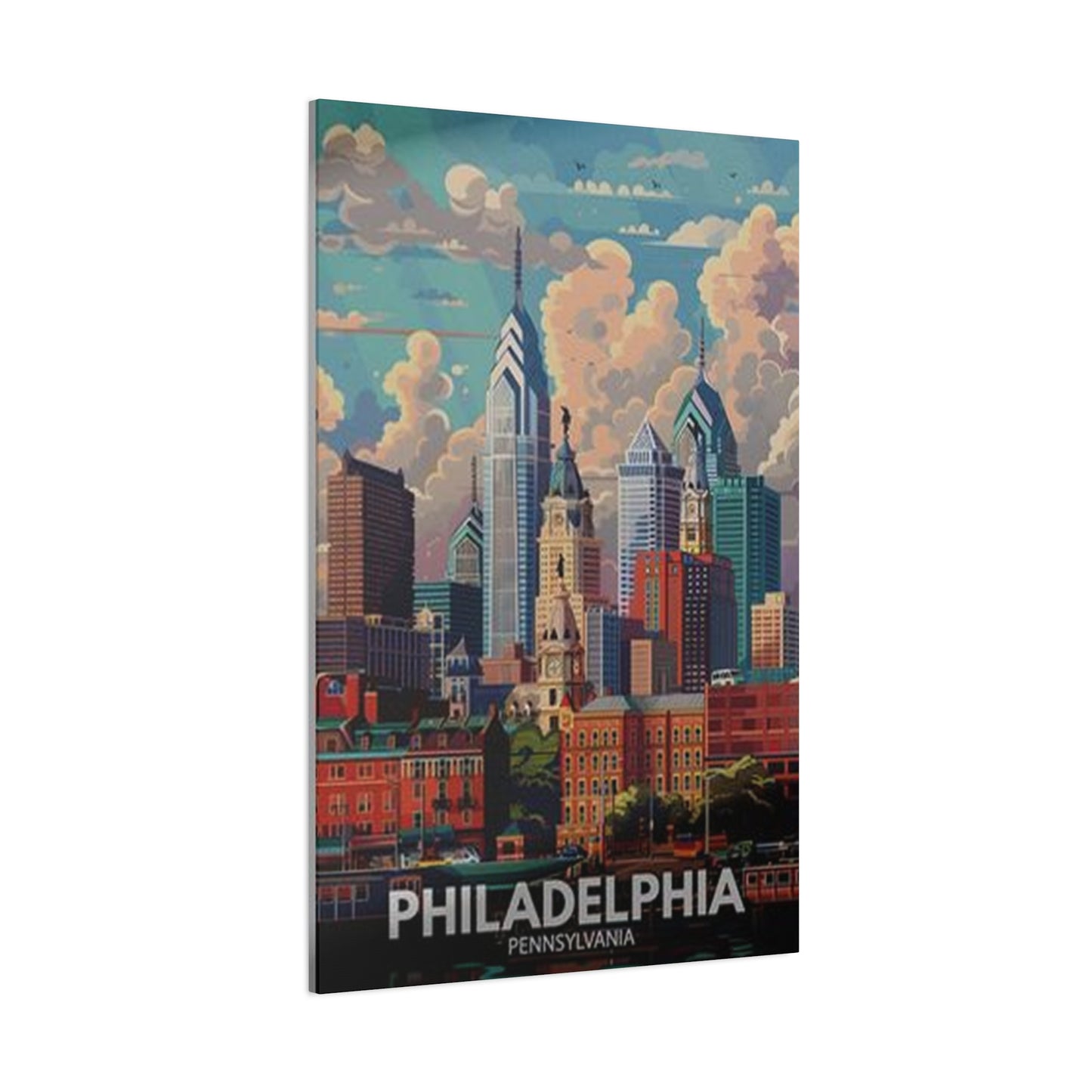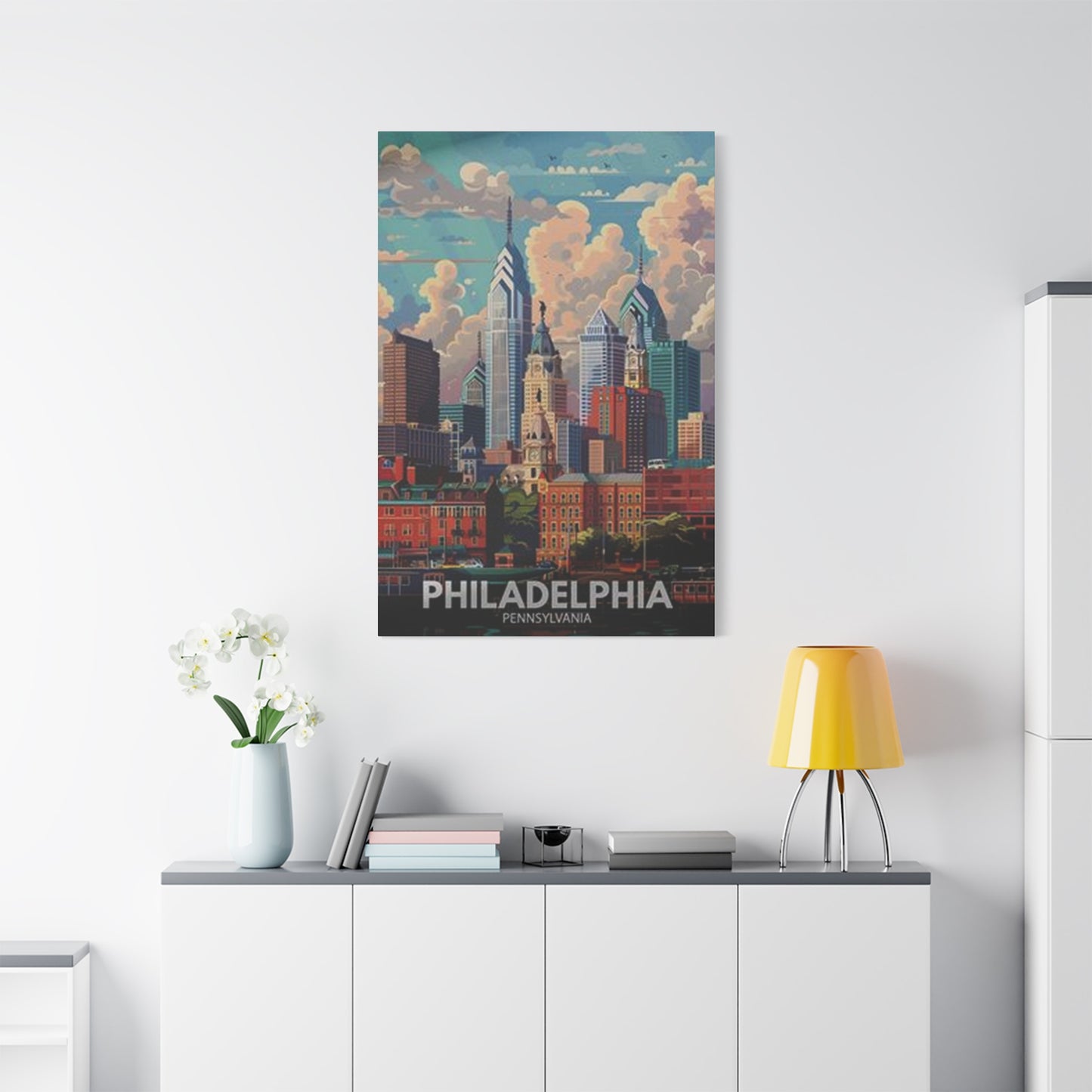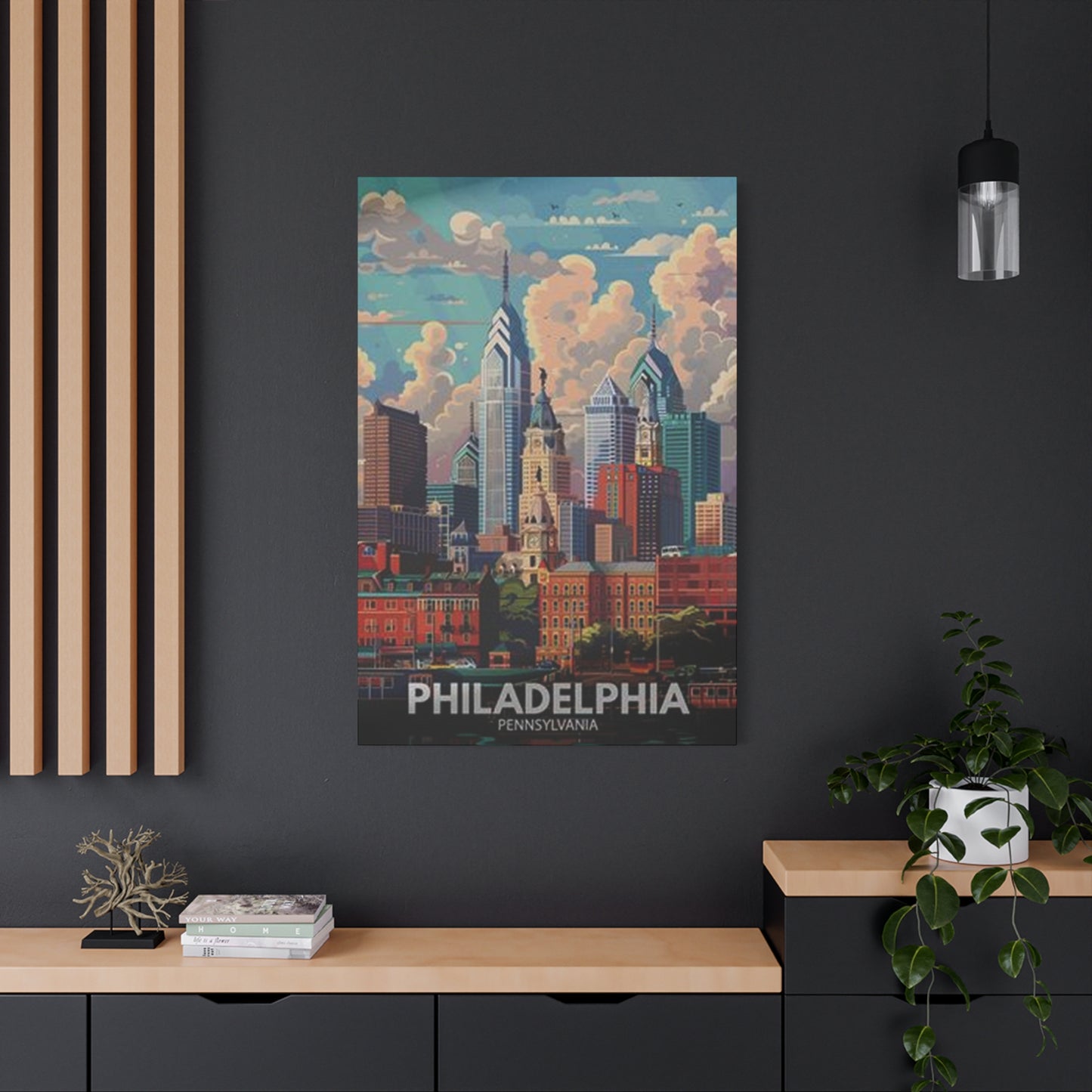Sunny Day in Philadelphia Wall Art: Capturing the City’s Radiant Charm
Philadelphia transforms into a visual masterpiece when bathed in sunlight. The city's architectural heritage comes alive under clear skies, creating countless opportunities for artistic interpretation. Historic neighborhoods reveal their character through the interplay of natural illumination and century-old facades. The cobblestone pathways of Old City glisten with a particular charm during morning hours, while the modern skyline catches golden rays that paint the buildings in ever-changing hues throughout the day.
The streets of this historic metropolis offer endless visual narratives when captured during pleasant weather conditions. Tree-lined avenues create natural canopies that filter sunshine into dappled patterns across sidewalks and storefronts. The Reading Terminal Market area buzzes with life as rays stream through architectural details, highlighting the vibrant energy of daily commerce. South Street maintains its bohemian atmosphere, enhanced by the way natural illumination accentuates colorful murals and eclectic shopfronts.
Center City becomes a canyon of light during midday hours, with tall structures creating dramatic contrasts between brilliance and shade. The Benjamin Franklin Parkway stretches majestically toward the Philadelphia Museum of Art, its wide expanse allowing unobstructed sunshine to showcase the flags of nations fluttering against azure skies. Rittenhouse Square provides a green oasis where dappled light through mature trees creates an almost impressionistic quality perfect for artistic representation.
The Delaware River waterfront gains new dimensions when illuminated by natural radiance. Penn's Landing transforms into a showcase of maritime heritage and contemporary development, with water surfaces reflecting both sky and cityscape in shimmering patterns. The Race Street Pier extends into the river, offering vantage points where urban architecture meets natural waterways under expansive heavens.
Historic districts like Society Hill present Federal and Georgian architecture at its finest when highlighted by natural luminosity. Brick facades glow with warmth, their varied textures creating visual interest enhanced by the angle of solar rays. Narrow streets between historic homes create intimate urban corridors where light and architecture dance in perpetual partnership. Elfreth's Alley, America's oldest residential street, becomes particularly photogenic during golden hour, when low-angle illumination emphasizes its colonial charm.
Fairmount Park represents one of the largest urban park systems in the nation, offering countless scenes where nature and sunshine collaborate. The Schuylkill River Trail provides perspectives where water, greenery, and distant cityscape combine under bright skies. Boathouse Row lights up both literally at night and figuratively during daytime hours, when Victorian architecture reflects in calm river waters beneath clear conditions.
University City showcases academic Gothic architecture that gains dramatic presence under direct illumination. The University of Pennsylvania campus features quadrangles and courtyards where collegiate atmosphere combines with architectural grandeur. Drexel University's blend of historic and contemporary structures creates visual variety enhanced by natural lighting conditions that change throughout seasons.
Manayunk's Main Street climbs a hillside lined with renovated mill buildings and colorful storefronts. This neighborhood's unique topography creates opportunities for elevated perspectives where sunshine illuminates the street scene from various angles. The nearby Manayunk Canal and towpath offer quieter scenes where historical waterways and natural vegetation create peaceful compositions.
Warm Tones in Philadelphia Wall Art
The color palette of Philadelphia under sunshine naturally lends itself to warm artistic interpretations. Red brick dominates the cityscape, from colonial row homes to industrial conversions, creating a foundation of earthy tones. These brick surfaces absorb and reflect light differently throughout the day, ranging from deep terracotta in shadows to almost orange brilliance when directly illuminated. Artists capturing these scenes often emphasize these warm undertones that define the city's visual character.
Golden hour photography and paintings of Philadelphia scenes showcase the city at its most dramatic. The low angle of sunrise and sunset light bathes buildings in amber and honey tones, transforming ordinary streets into extraordinary compositions. Stone facades that appear gray under overhead sun gain peachy and golden qualities during these magical hours. Church steeples and monument tops catch these rays first and last, creating focal points in many artistic compositions.
Autumn in Philadelphia provides nature's own contribution to the warm color story. Street trees transition through yellows, oranges, and reds that complement the existing brick architecture. Parks and squares become tapestries of warm hues that artists eagerly capture. The combination of foliage colors with architectural elements creates layered compositions rich in visual warmth.
Historical accuracy in Philadelphia artwork often requires attention to the authentic color palette of different eras and neighborhoods. Colonial-era buildings typically featured muted colors derived from natural pigments, while Victorian structures embraced richer, more varied palettes. Queen Village and Bella Vista neighborhoods showcase Italianate row homes with decorative details that add visual warmth. Understanding these historical color schemes helps artists create authentic representations.
Sunset views from elevated positions reveal Philadelphia bathed entirely in warm light. The observation deck at City Hall provides panoramic views where the entire cityscape glows with amber and rose tones. Artists capturing these perspectives often emphasize the way buildings layer into the distance, each catching light differently, creating depth through warm color gradations.
Market scenes offer concentrated warmth through both architectural setting and human activity. Reading Terminal Market's interior, while not strictly outdoor, provides endless warm tones through food displays, lighting, and crowd energy. Outdoor farmers markets throughout neighborhoods present colorful produce arrangements and vendor setups that add warmth to urban scenes.
Coffee shops and outdoor dining scenes capture Philadelphia's social culture while providing warm visual elements. Sidewalk cafes along South Street, Walnut Street, and throughout various neighborhoods create opportunities to depict urban life. The warm tones of wood furniture, awnings, and the golden liquid in coffee cups themselves add to the overall warmth of these compositions.
Industrial heritage sites gain unexpected warmth when captured artistically. The Navy Yard's historic buildings, while massive and potentially imposing, reveal beautiful warm tones in their brick and stone construction. Abandoned industrial sites throughout the city, many now being adaptively reused, show weathered surfaces with rich color variations from rust, aged materials, and nature's reclamation.
Sports culture adds vibrant warm colors through team associations and fan passion. The orange and black of the Flyers, the red pinstripes of the Phillies, and the eagles' midnight green with accents create recognizable color stories. Game day scenes throughout the city pulse with these colors worn by passionate supporters, creating contemporary warm-toned subject matter.
Twilight compositions capture the transition between natural and artificial light, creating unique warm palettes. Street lamps begin to glow while the sky retains its own luminosity, creating a doubled warmth effect. Window lights in residential buildings add countless points of golden warmth to urban scenes. This transitional time offers artists rich opportunities for warm, atmospheric pieces.
Food culture provides literal warmth that translates visually. Cheesesteak shops, pretzel vendors, and outdoor food festivals present both steam and actual food products in warm tones. The iconic soft pretzel's golden-brown surface becomes a subject itself, while representing Philadelphia's culinary identity. Pizza ovens glowing in restaurant windows, food trucks with colorful graphics, and outdoor grilling scenes all contribute warmth.
Neighborhood festivals and street fairs create temporary explosions of warm color. Italian Market Festival, Greek Festival, and countless block parties fill streets with decorations, food, and celebrations. Artists capturing these events incorporate the warm tones of celebration, festive lighting, and community gatherings that define Philadelphia's neighborhood culture.
Capturing Sunlight in Philly Scenes
The technical and artistic approach to capturing sunlight in Philadelphia scenes requires understanding both photographic principles and artistic interpretation. Natural illumination creates specific challenges and opportunities depending on time of day, season, and atmospheric conditions. Morning light arrives from the east, streaming down Market Street and other east-west thoroughfares, creating long shadows and dramatic side-lighting on north-south streets. This directionality provides depth and dimension to urban compositions.
Photographers and artists working in Philadelphia must consider the seasonal sun angle variations. Summer's high arc creates shorter shadows and more vertical illumination, while winter's lower path produces extended shadows and more horizontal light raking across surfaces. These variations dramatically change how the same location appears throughout the year. The solstice periods offer extreme examples of these differences, with summer solstice providing nearly overhead noon light and winter solstice creating all-day golden hour effects.
Atmospheric conditions significantly impact how sunlight appears in Philadelphia scenes. Humidity from the Delaware and Schuylkill Rivers can create a subtle haze that softens harsh sunlight, producing a diffused quality popular in romantic artistic interpretations. Crisp autumn days after cold front passages provide exceptionally clear conditions with vibrant colors and sharp shadows. Spring's variable weather creates opportunities for dramatic sky conditions with partial clouds allowing shafts of light to spotlight specific urban features.
Glass and reflective surfaces throughout Philadelphia's architecture create secondary light sources. Modern office towers reflect sunlight in ways that illuminate shaded streets and create interesting patterns. Historic buildings with large windows become light boxes that glow from within while simultaneously reflecting external conditions. These reflections can be incorporated as compositional elements that add complexity and visual interest.
Water features throughout the city provide natural opportunities for capturing reflected and refracted light. Fountain displays in Logan Square, Sister Cities Park, and Dilworth Plaza create spray that catches sunlight, producing rainbow effects and sparkling highlights. The rivers themselves become mirrors during calm conditions, doubling the visual impact of architectural and natural features along their banks. Puddles after rain create temporary reflecting pools that many street photographers incorporate into their compositions.
Backlighting techniques create silhouettes and rim lighting effects particularly effective in urban environments. Positioning subjects between camera and sun produces dramatic outlines while reducing detail to essential shapes. This approach works especially well for recognizing iconic Philadelphia landmarks where the silhouette alone tells the story. The William Penn statue atop City Hall, the LOVE sculpture, and the Rocky steps all register immediately even in silhouette.
Lens flare and sun stars, once considered technical flaws, have become accepted artistic elements. Shooting toward the sun with small apertures creates starburst effects that emphasize the light source itself. Allowing controlled lens flare can create dreamy, atmospheric qualities that enhance rather than detract from compositions. Many contemporary Philadelphia artists intentionally incorporate these optical phenomena as stylistic signatures.
Seasonal events create specific lighting opportunities. The Flower Show brings spring blooms and controlled lighting indoors, creating unique combinations of natural and artificial illumination. Holiday light displays transform the city during winter, but the daytime scenes leading up to these events show preparation work that captures authentic urban moments. Cherry blossoms along Kelly Drive bloom in spring, creating canopies of pink that filter sunlight into pink-tinged illumination.
Shadow patterns become subjects themselves in Philadelphia's urban geometry. Fire escapes create repeating ladder-like shadows on brick facades. Tree branches cast organic patterns across pavement and buildings. The structural elements of the Market-Frankford El create regular shadow rhythms as trains pass overhead. These patterns add graphic qualities to compositions and emphasize the passage of time as they shift throughout the day.
The human element interacts with sunlight in countless ways worth capturing. Pedestrians walking through shafts of light between buildings, shopkeepers opening awnings, children playing in park sunshine, and outdoor workers taking shade breaks all tell stories about how people experience and respond to natural illumination. These moments add narrative and relatability to purely architectural or natural scenes.
Weather transitions provide dramatic lighting opportunities. Storm clouds breaking to allow sunshine through create theatrical lighting with dark skies contrasting against illuminated foregrounds. These conditions don't last long but reward prepared artists with dramatic, moody compositions. Similarly, fog lifting in morning hours reveals the city gradually, creating mysterious partially obscured views.
Artificial light mixing with natural illumination during twilight hours creates Philadelphia's "blue hour" opportunities. The deep blue sky still provides some natural light while city lights have gained sufficient intensity to register. This balance creates atmospheric scenes impossible to replicate at any other time. Neon signs, traffic lights, vehicle headlights, and illuminated buildings all combine with residual daylight.
Small vs Large Philly Canvas Prints
Selecting the appropriate size for Philadelphia artwork involves considering multiple factors including viewing distance, available wall area, the intended impact, and the specific scene depicted. Small canvas prints, typically ranging from eight by ten inches to sixteen by twenty inches, offer distinct advantages. These compact pieces work beautifully in arrangements or gallery groupings where multiple images tell a collective story. A series of small prints showing different Philadelphia neighborhoods creates a curated collection that reveals the city's diversity without overwhelming a single wall area.
Small-format Philadelphia prints excel in intimate viewing environments. A home office desk area, bedside table vicinity, or bathroom wall benefits from appropriately scaled artwork that provides visual interest without dominating the limited area. These smaller pieces also present lower financial barriers, allowing collectors to acquire multiple works or begin collecting with less initial investment. For renters or those who frequently relocate, smaller pieces offer practical advantages in terms of transport and installation flexibility.
Detail-rich Philadelphia scenes often translate better to larger formats where viewers can appreciate intricate elements. A panoramic view from Belmont Plateau showing the entire city skyline deserves presentation at substantial scale to convey the sweep and majesty of the vista. Conversely, an intimate scene of a single historic doorway on a Society Hill street might work perfectly at smaller dimensions where viewers naturally lean in to appreciate architectural details.
Medium-sized canvases, approximately twenty by thirty inches to thirty by forty inches, represent versatile middle ground. These dimensions work above furniture pieces like sofas and beds, over fireplace mantels, or as standalone focal points on otherwise empty walls. A scene of Boathouse Row might work beautifully at this scale, large enough to appreciate the architectural details of individual boathouses while remaining proportionally appropriate for residential settings.
Large-format Philadelphia prints, exceeding forty inches in any dimension, make bold statements appropriate for generous wall areas. A spacious living room with high ceilings calls for artwork scaled to the architecture. A massive canvas featuring a dramatic storm clearing over the Benjamin Franklin Parkway commands attention and becomes a room's focal point. Hotels, corporate offices, and public buildings often require this scale to maintain visual presence in rooms designed for groups and high traffic.
The viewing distance principle suggests that larger artwork should be viewed from greater distances. In a long hallway or across a large room, substantial sizing ensures the image remains visible and impactful. Conversely, artwork positioned where viewers pass closely, such as stairwell walls or narrow corridors, works better at smaller scales where the image can be comprehended from close range without requiring the viewer to step back.
Aspect ratio considerations affect how different Philadelphia scenes translate to various canvas dimensions. The city's skyline naturally suggests horizontal compositions that capture the breadth of the urban landscape. Vertical formats work beautifully for subjects like City Hall's tower, church steeples, or narrow historic streets that emphasize height and perspective. Square formats offer balanced, contemporary presentations suitable for grid arrangements or modern minimalist settings.
Practical installation concerns influence size selection. Weight increases substantially with larger canvases, requiring appropriate hanging hardware and potentially wall reinforcement. Larger pieces also demand precise positioning since adjusting a sixty-inch canvas proves more challenging than relocating a small print. Doorway clearances, stairwell navigation, and elevator dimensions may constrain the maximum practical size for certain locations.
The relationship between image resolution and print size matters significantly for photographic canvas reproductions. A small digital file that looks crisp on a computer screen may reveal pixelation or lack of sharpness when enlarged substantially. Professional Philadelphia photographers typically capture images at resolutions suitable for large-format printing, but collectors should verify that their chosen image source can support their desired canvas size without quality degradation.
Multiple small prints arranged in grid or salon-style configurations create customizable displays. A grid of nine small square canvases, each showing different Philadelphia architectural details, creates modern impact while maintaining individual piece approachability. This approach allows for future additions or rearrangements, keeping the display dynamic. Salon-style arrangements with varied sizes create curated, collected-over-time aesthetics popular in eclectic design approaches.
Budget considerations often influence size selection, as larger canvases naturally cost more for materials and printing. Creating impact through arrangement of multiple smaller pieces can sometimes prove more economical than a single large statement piece. However, the visual impact differs, with large single images providing bold simplicity while multiple smaller pieces offer variety and complexity.
Personal preference and emotional response ultimately guide size selection. Some collectors prefer the intimacy of smaller works that reward close viewing, while others respond to the drama and presence of large-scale pieces. Living with artwork samples or using digital mockups showing different sizes in actual settings helps determine what feels right for specific situations.
Sunny Day Philadelphia Art
Proper maintenance ensures Philadelphia canvas artwork retains its vibrancy and structural integrity for years or decades. Canvas prints, whether reproductions or original paintings, require specific care approaches different from framed paper prints or other art forms. Understanding these requirements protects the investment and preserves the artistic vision captured in the work.
Environmental conditions significantly impact canvas artwork longevity. Direct sunlight, while celebrated in the artwork's subject matter, poses the primary threat to the actual piece. Ultraviolet radiation causes fading, particularly affecting certain pigments and inks more than others. Yellows and reds often fade first, gradually shifting color balance and reducing vibrancy. Positioning canvas artwork away from direct window light or using UV-filtering window films protects against this damage. Rooms with northern exposure typically receive gentler, more consistent light without direct sun penetration.
Humidity and temperature fluctuations stress canvas materials. Excessive moisture can cause canvas to slacken on its stretcher frame, creating a drooping appearance. It may also promote mold or mildew growth, particularly in organic canvas materials. Conversely, extremely dry conditions can cause canvas to become brittle and prone to cracking. Maintaining consistent indoor humidity between forty and fifty percent protects canvas artwork. Bathrooms and kitchens, with their humidity extremes, generally represent poor locations for valuable canvas pieces.
Dust accumulation dulls artwork over time, creating a subtle film that reduces color vibrancy. Regular gentle cleaning maintains appearance without causing damage. A soft, dry microfiber cloth or artist's brush lightly swept across the canvas surface removes dust without abrading the surface. Avoid feather dusters, which can catch on canvas texture, and never use water or cleaning solutions unless specifically designed for canvas artwork. For valuable pieces, professional cleaning services offer specialized care beyond home maintenance capabilities.
Physical damage risks include punctures, tears, and corner damage from impacts. Canvas stretched over wooden frames creates a somewhat fragile surface vulnerable to pressure or sharp objects. Hanging artwork securely prevents accidental falls. In households with active children or pets, positioning canvas pieces higher on walls or in lower-traffic areas reduces risk. Corner protectors during storage or transport prevent the stretcher frame corners, often the most vulnerable points, from damage.
Smoke and airborne contaminants gradually dirty artwork and may cause chemical damage. Cooking smoke, fireplace emissions, and cigarette smoke all deposit residues that discolor and damage canvas over time. Air purification systems help, but preventing exposure through thoughtful room selection provides better protection. Gallery-wrapped canvases, where the image continues around the stretcher bars, lack glazing protection and thus expose more surface to environmental contaminants.
Handling canvas artwork properly during cleaning, moving, or storage prevents accidental damage. Always handle pieces by the frame or stretcher bars rather than touching the canvas surface itself. Oils from skin, even when hands appear clean, transfer to canvas and attract dirt while potentially causing long-term staining. When moving pieces, carry them facing inward toward the body to prevent accidentally puncturing the canvas. Never stack multiple canvases face-to-face without protective covering between them.
Proper hanging techniques ensure secure mounting while preventing stress on the canvas. Heavy pieces require appropriate anchors in wall studs or high-quality hollow-wall anchors rather than simple picture hooks. Wire hanging systems distribute weight better than single-point hangers. Leveling artwork carefully prevents the visual distraction of crooked pieces while ensuring even weight distribution on mounting hardware. Periodically checking that hanging hardware remains secure prevents falls that could damage both artwork and walls.
Climate control proves especially important for valuable or original Philadelphia artwork. Basements and attics, with their temperature and humidity extremes, represent poor storage or display locations. Conditioned living areas with consistent temperatures maintain canvas stability. If storing pieces long-term, wrap them in acid-free paper or cloth, never plastic, which traps moisture. Store horizontally if possible to prevent sagging, or vertically with adequate support to prevent warping.
Insurance and documentation protect financial investment in Philadelphia artwork. Photographing pieces clearly, maintaining purchase records, and potentially obtaining appraisals for valuable works provides documentation for insurance purposes. Specific fine arts insurance riders may be necessary for pieces exceeding standard homeowner policy limits. This protection proves especially valuable for original artwork or limited edition prints.
Periodic professional assessment helps identify developing problems before they become serious. Art conservators can spot early signs of damage, recommend preventive measures, and perform restoration if needed. For valuable pieces, annual or biennial professional evaluation represents a small cost compared to potential restoration expenses or permanent damage from neglected problems.
Glazing or varnishing provides additional protection but must be done properly. Modern canvas prints sometimes include protective coatings applied during manufacture. Adding additional varnish to original paintings requires artist approval or professional application to avoid damage. UV-protective varnishes exist specifically for artwork protection. However, improper application can cause discoloration or create removal difficulties if future restoration becomes necessary.
Rotating displayed artwork periodically allows even light exposure, prevents fixation blindness where familiar pieces become invisible to occupants, and keeps collections fresh. Stored pieces should be checked periodically for any developing problems. This rotation strategy extends the useful display life of all pieces in a collection while maintaining household visual interest.
Framing Ideas for Philly Wall Art
Framing choices dramatically impact how Philadelphia canvas artwork integrates with surrounding decor while affecting the piece's visual impact. Unlike traditional prints behind glass, canvas pieces offer multiple presentation options ranging from unframed gallery wrap to elaborate traditional frames. Each approach creates different aesthetic effects and suits different artistic styles and room settings.
Gallery wrap presentation, where printed canvas continues around stretcher bar edges, creates contemporary, minimalist presentation. This frameless approach emphasizes the artwork itself without additional borders or decoration. The image either mirrors at edges, continues the scene, or features solid colored edges. Gallery wrap works beautifully with modern decor, maintaining clean lines and uncluttered appearance. It also proves more budget-friendly than custom framing while offering a finished, professional look suitable for immediate hanging.
Floater frames create the illusion of artwork floating within the frame, with a small gap between canvas edge and frame itself. This contemporary presentation style adds definition without touching the canvas, allowing gallery-wrapped edges to remain visible. Floater frames come in various wood species, metal finishes, and depths, offering customization while maintaining modern aesthetics. They work particularly well for Philadelphia cityscape images where the contemporary framing style matches urban subject matter.
Traditional frames with liners provide classic, formal presentation suited to certain Philadelphia subjects and decor styles. A scene of historic Society Hill or Independence Hall might benefit from traditional dark wood framing that echoes the historical subject matter. Ornate gold or silver leaf frames suit formal settings and traditional decor, adding elegance and importance to the artwork. Liner materials, the inner frame layer, can be covered in linen, suede, or other materials that add depth and richness.
Color coordination between frames and artwork affects visual harmony. Frames matching dominant colors in the artwork create cohesive looks but may feel too matched. Frames in complementary colors add visual interest while maintaining coordination. Neutral frames in black, white, or natural wood work with virtually any artwork, letting the image rather than the frame dominate. Philadelphia's brick-heavy color palette often works beautifully with walnut or cherry wood frames that echo those warm tones.
Frame width impacts visual weight and appropriateness. Narrow frames provide minimal border, keeping focus on the artwork itself, suitable for busy, detailed images where additional framing would overwhelm. Medium frames, typically two to four inches wide, offer versatile options suitable for most artwork and settings. Wide frames, exceeding four inches, create substantial presence, work well with minimalist images that benefit from expansive bordering, and suit large walls where proportional sizing requires more substantial framing.
Metal frames offer sleek, contemporary presentation particularly suited to modern Philadelphia photography or abstract interpretations. Aluminum frames provide durability with minimal visual weight, available in finishes from brushed silver to bold colors. Steel frames offer industrial aesthetics matching Philadelphia's manufacturing heritage and converted loft aesthetics. Metal frames resist warping and prove particularly durable in humid environments.
DIY framing versus professional framing presents cost and quality tradeoffs. Pre-made frames from craft stores fit standard canvas sizes economically but offer limited selection. Custom framing provides perfect sizing, extensive material options, and professional results but costs significantly more. For valuable artwork, professional framing proves worthwhile. For reproduction prints or in budget-conscious situations, quality pre-made frames provide acceptable results.
Shadow box framing creates dimensional presentation by setting artwork deeper within the frame. This approach works beautifully when incorporating three-dimensional elements like a piece of Philadelphia brick, a vintage subway token, or other memorabilia alongside canvas artwork. Shadow boxes turn single pieces into assemblages that tell richer stories and create unique conversation pieces.
Rustic or reclaimed wood framing provides textural interest matching Philadelphia's industrial and historical character. Barnwood frames bring warmth and character, particularly suiting images of Manayunk mills, Fishtown warehouses, or other subjects with working-class heritage. These frames add age and authenticity that can enhance or contrast with the artwork depending on desired effect.
Minimalist Scandinavian-style frames feature light woods like oak, ash, or beech with simple profiles. These frames create airy, contemporary presentation without visual heaviness, working beautifully in modern, minimalist, or Nordic-influenced settings. Their simplicity ensures artwork dominates while the frame provides clean definition.
Frame mats, while more common with paper prints, occasionally work with canvas. A frame built with substantial depth can incorporate a mat that surrounds gallery-wrapped canvas, creating separation between image and frame. This traditional presentation suits certain classical subjects but requires careful execution to avoid looking odd with three-dimensional canvas.
Matching frames across multiple pieces creates unified presentation for series or collections. Identical framing helps disparate subjects feel related, useful when creating gallery walls of various Philadelphia neighborhood scenes. However, varied framing can work if pieces share other common elements like color palette or subject matter, creating curated, collected-over-time aesthetics.
Seasonal frame changes offer flexibility for those who enjoy updating their decor. Using frames with removable backs allows easy artwork swapping, letting owners rotate pieces seasonally or whenever desired. This approach maximizes enjoyment of entire collections rather than permanently mounting every piece.
Light and Shadow in Philadelphia Prints
The interplay of illumination and darkness defines the dramatic visual character of Philadelphia artwork. This relationship creates depth, emotion, and narrative within two-dimensional representations. Artists and photographers working in this city have centuries of architectural and natural subjects offering compelling contrasts between lit and shadowed areas.
Historical architectural features create distinctive shadow patterns. Colonial buildings with deep-set windows and doorways produce dark recesses that contrast with sunlit facades. These shadows emphasize the dimensionality of period architecture while creating mystery about what lies within darkened openings. Society Hill's historic homes become studies in geometric shadows when afternoon light rakes across their faces, highlighting corbels, lintels, and other decorative elements through the shadows they cast.
The grid pattern of Philadelphia's street layout creates predictable but dynamic shadow situations. North-south streets receive different lighting than east-west thoroughfares, with seasonal and hourly variations creating endless permutations. Artists can return to the same intersection throughout the year, capturing entirely different shadow situations each time. Market Street at noon in summer shows short shadows under overhead sun, while the same location at the same time in winter features extended shadows from the lower sun angle.
Tree-lined residential streets create organic shadow patterns that contrast with architectural geometry. Mature trees along streets like Delancey, Panama, and Pine cast dappled shadows across brick homes and parked vehicles. These natural shadows soften urban scenes while creating visual interest through irregular, constantly shifting patterns as leaves move in breezes. Seasonal variations prove dramatic, with bare winter branches casting delicate tracery shadows while summer foliage creates dense shade.
Industrial structures generate bold graphic shadows. Bridge supports, water tower legs, and factory architecture create linear shadow elements that add dynamic diagonal or geometric components to compositions. The patterns under elevated rail lines create rhythmic repetition as structural columns cast parallel shadows across streets below. These industrial elements provide modernist, abstract qualities even in representational artwork.
The human figure interacting with light and shadow adds narrative and scale. Pedestrians walking through sunlit patches on otherwise shaded streets, shoppers browsing vendor stalls with striped awning shadows, or solitary figures silhouetted against bright backgrounds all create story moments. These human elements transform cityscape documentation into narrative art that viewers connect with emotionally.
Chiaroscuro techniques, borrowed from Renaissance painting traditions, create dramatic Philadelphia images through strong contrast between light and dark. This approach works particularly well for evening scenes where street lights or illuminated windows create bright areas against darkening surroundings. The mystery and drama of deep shadows punctuated by light sources creates moody, atmospheric prints popular with collectors seeking sophisticated pieces.
Reflected light fills shadows with subtle illumination worth capturing. Philadelphia's reflective surfaces, from glass buildings to river waters, bounce light into areas that would otherwise be purely dark. This secondary illumination creates modeling within shadows, revealing detail while maintaining overall contrast. Painters historically studied and intentionally depicted this reflected light; photographers can capture it naturally but must recognize its contribution to successful images.
Shadow as compositional element serves multiple functions. Shadows can lead the eye through an image, create framing elements around subjects, or establish foreground-to-background relationships. A Philadelphia street scene might use sidewalk shadows as leading lines directing viewers toward a distant architectural element. Shadows can also create negative spaces that emphasize positive elements, like lit areas becoming more prominent due to surrounding darkness.
Seasonal shadow qualities change dramatically with sun angle and vegetation. Summer's high sun creates short, dense shadows in midday while producing long, dramatic shadows early and late. Winter's constantly low sun angle creates all-day shadow situations that would occur only during golden hour in summer. Spring and fall transitions offer moderate shadow conditions that many find ideal for balanced photography and painting.
The emotional impact of shadow-heavy versus light-filled images differs substantially. Bright, shadow-minimized images feel optimistic, energetic, and welcoming. They work well for celebratory purposes and spaces where uplift is desired. Shadow-rich images feel contemplative, sophisticated, or mysterious, suited to environments where reflection and thought are appropriate. Understanding this emotional language helps collectors select pieces matching their intended feeling.
Technical considerations affect how shadow detail renders in prints. Digital photography can lose detail in deep shadows if exposure favors highlights, resulting in blocked-up black areas without detail. High dynamic range processing can recover some shadow detail but risks creating unnatural-looking results if overused. Painters control shadow detail through color choices and technique, potentially revealing more or less information within dark areas than photography typically captures.
Abstract interpretations of Philadelphia light and shadow situations reduce recognizable elements to pure contrast play. These pieces maintain connection to the city's visual character while achieving aesthetic independence from literal representation. Collectors seeking artwork coordinating with decor while maintaining Philadelphia connection may prefer these abstract shadow studies over literal representations.
Abstract Styles of Philly Sunny Days
Abstract artistic approaches to Philadelphia's illuminated scenes range from slightly stylized near-representations to completely non-representational works inspired by the city's visual essence. These interpretations offer collectors alternatives to literal photography while maintaining connections to Philadelphia's character and atmosphere. Abstract artwork coordinates easily with various decor styles while providing sophisticated visual interest.
Color field paintings inspired by Philadelphia's sunny day palettes reduce the cityscape to horizontal bands or blocks of color. Sky blues, brick oranges, street grays, and foliage greens combine in simplified arrangements that evoke the feeling of a sunny Philadelphia day without depicting specific locations. These works function as both art and decor, providing color coordination while maintaining artistic credibility. They work particularly well in modern or minimalist settings where representational art might feel too busy.
Geometric abstraction translates Philadelphia's architectural forms into angular compositions. The city's mix of rectangular buildings, triangular roof lines, and grid street patterns provides endless geometric inspiration. Artists might reduce the skyline to a series of overlapping rectangles in varying sizes and colors, creating compositions that feel urban and specifically Philadelphia-influenced without literally depicting the city. These pieces appeal to collectors appreciating order, structure, and contemporary aesthetics.
Impressionistic approaches blur details while capturing light quality and general atmosphere. Heavy impasto paint application or photographic blur techniques create pieces where Philadelphia remains recognizable but rendered in pure sensation rather than description. Boathouse Row might become a series of colorful dabs along a blue band, immediately recognizable to locals while achieving artistic interpretation beyond mere documentation. These pieces offer the best of both worlds for collectors wanting recognizable Philadelphia subjects with artistic interpretation.
Expressionistic Philadelphia art prioritizes emotional content over accurate representation. Bold color choices, aggressive brushwork, or digital distortions convey feelings about the city rather than its appearance. A scene of Market Street might use intense, non-naturalistic colors and exaggerated perspective to express the energy and chaos of urban experience. These emotionally charged pieces suit collectors wanting art that provokes feeling rather than provides comfort.
Cubist-inspired multiple perspective combinations show Philadelphia locations from several viewpoints simultaneously. City Hall might be depicted from ground level, aerial view, and profile simultaneously in one composition. This approach creates dynamic, intellectual artwork that rewards extended viewing as viewers decode the various perspectives. It particularly suits corporate or academic settings where thought-provoking art enhances the environment.
Minimalist reduction strips Philadelphia scenes to essential elements. A single horizontal line suggests the horizon where sky meets cityscape. A few vertical marks indicate buildings. Perhaps a circle represents the sun. These spare compositions challenge viewers to complete the image mentally, creating engagement through what's absent rather than present. Minimalist Philadelphia art works beautifully in contemporary settings where simplicity and restraint are valued.
Mixed media approaches combine painting, photography, collage, and found materials. An artist might photograph a Philadelphia street, print it, then overpaint sections, add collaged elements like vintage maps or ticket stubs, and finish with graphic elements. These layered works create rich visual complexity and unique pieces impossible to replicate. They appeal to collectors appreciating craft, originality, and eclectic aesthetics.
Digital manipulation transforms photographic Philadelphia reality into artistic interpretation. Software filters can create oil painting effects, watercolor looks, or entirely unique digital aesthetics impossible to achieve through traditional media. While purists may dismiss these approaches as less authentic, they represent legitimate contemporary art forms and create striking pieces often more affordable than traditional media originals. Digital art's reproducibility allows limited editions at accessible price points.
Conclusion
Few cities balance history, culture, and everyday vibrance quite like Philadelphia, and nothing captures its timeless beauty more vividly than Sunny Day in Philadelphia wall art. Through radiant colors, soft golden light, and familiar urban scenery, these artworks celebrate the heart and soul of a city that thrives on energy, heritage, and human connection. Every canvas—whether depicting the skyline glistening under sunlight, the cobblestone streets of Old City, or the lively spirit of Fairmount Park—reflects Philadelphia’s unique rhythm: warm, authentic, and endlessly inspiring.
The charm of sunlit cityscape wall art lies in its ability to blend nostalgia with optimism. A bright Philadelphia morning immortalized in paint or print doesn’t just portray architecture—it captures emotion. The sun-drenched streets symbolize hope, progress, and the enduring spirit of a city that has evolved gracefully through time. Whether displayed in a home office, living room, or entryway, this art infuses spaces with the same vitality and openness that characterizes the city itself.
From a design standpoint, Philadelphia wall art offers a versatile aesthetic that complements both modern and traditional interiors. The golden hues and soft light evoke warmth, making them ideal for rooms that need brightness and depth. Pairing these artworks with wooden frames or metallic accents enhances their urban sophistication, while minimalist matting highlights the serenity of the composition. Whether your décor leans toward industrial chic or cozy classic, sunny Philadelphia prints can seamlessly tie your space together with radiant harmony.
But beyond visual appeal, city-inspired art carries an emotional resonance that few genres can match. For residents, it becomes a daily reminder of home—a celebration of the streets, architecture, and sunlight that shape daily life. For admirers afar, it serves as a window into Philadelphia’s welcoming soul, reflecting a sense of optimism that transcends geography. The interplay of light and shadow across iconic landmarks—like the Liberty Bell, City Hall, or the Schuylkill River—tells a story of resilience and pride unique to this historic city.
Art has always been about connection—between the artist, the subject, and the viewer. Sunny Day in Philadelphia wall art embodies that connection beautifully, uniting the warmth of natural light with the architectural charm of urban life. The result is not just an image, but an atmosphere—one that radiates positivity and invites reflection. Hanging such a piece in your home transforms a simple wall into an emotional landscape, filled with light, hope, and inspiration.
Ultimately, Philadelphia’s radiant charm extends far beyond its streets and skylines—it lives in the stories, memories, and emotions captured through art. By embracing these sunlit depictions, you bring into your home a symbol of vitality, unity, and optimism. It’s a way to celebrate both the city’s enduring legacy and your own personal connection to its spirit.
In essence, Sunny Day in Philadelphia wall art is more than décor—it’s a tribute to a city that shines in every season, a masterpiece of light and life that transforms your space with the glow of urban elegance. Just as the city itself welcomes everyone with open arms, this art welcomes warmth, joy, and history into your home—reminding you, every day, of the simple beauty found beneath the Philadelphia sun.

















